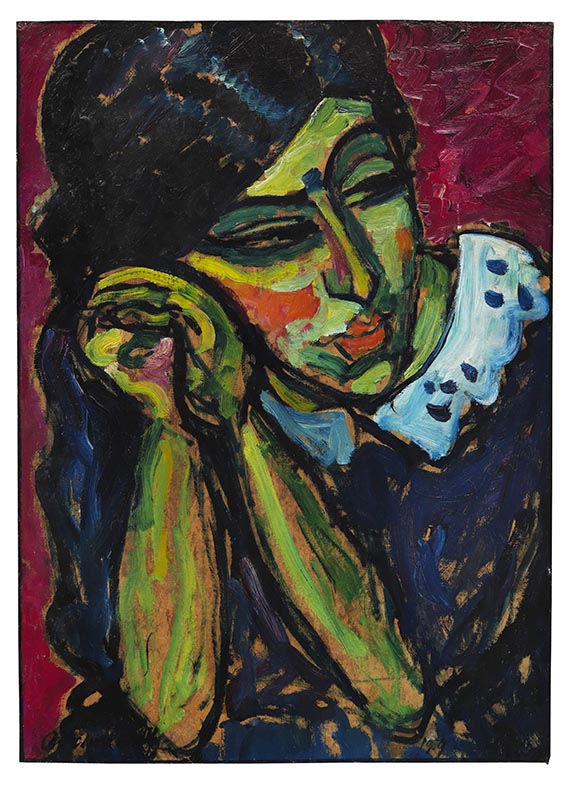Dictionary


Action Painting
Action Painting was a form of artistic expression based in Abstract Expressionism, which was inseparably linked with the act of painting. The style emerged in America during the late 1940s. The term was coined by American art critic Harold Rosenberg, who published an essay entitled "The American Action Painters" in 1952.
Jackson Pollock (1912-56) was the most prominent of the Action painters. In reference to his "Action-Painting", Pollock claimed that only when a painting was freed from the easel and placed on the floor, could he approach the work from all sides and move in such a way that he was literally "in" the picture. Pollock compared this approach with that of Indian sand painters. He also rejected traditional painting techniques, and instead employed a method called "dripping", which involved dripping or pouring the paint (frequently paint varnish) directly onto the canvas. Pollock’s technique was filmed and photographed by Hans Namuth (1915-90), which in now provides useful insight into Pollock’s methods, as they show how particular sequences of movements produced the marks in the paintings. Pollock claimed that the process of painting was an unconscious act, and that he became familiar with the image during its production, developing a relationship with it. Thus, in some respects, Action painting was a continuation of the écriture automatique practised by the Surrealists. This approach also linked Action painting with the Informel style. The pure "drippings" arose from movement, and resulted in finely spun, calligraphy-like nets of tracks and threads of colour poured on top of one another in numerous layers, which covered the entire canvas. This method was referred to as "all over". Other key Action painters included Norman Bluhm, Franz Kline, Willem de Kooning and Helen Frankenthaler, European painters such as Georges Mathieu and César, as well as Japanese artists from the Gutai Group, particularly Kazuo Shiraga.
Action Painting was a form of artistic expression based in Abstract Expressionism, which was inseparably linked with the act of painting. The style emerged in America during the late 1940s. The term was coined by American art critic Harold Rosenberg, who published an essay entitled "The American Action Painters" in 1952.
Jackson Pollock (1912-56) was the most prominent of the Action painters. In reference to his "Action-Painting", Pollock claimed that only when a painting was freed from the easel and placed on the floor, could he approach the work from all sides and move in such a way that he was literally "in" the picture. Pollock compared this approach with that of Indian sand painters. He also rejected traditional painting techniques, and instead employed a method called "dripping", which involved dripping or pouring the paint (frequently paint varnish) directly onto the canvas. Pollock’s technique was filmed and photographed by Hans Namuth (1915-90), which in now provides useful insight into Pollock’s methods, as they show how particular sequences of movements produced the marks in the paintings. Pollock claimed that the process of painting was an unconscious act, and that he became familiar with the image during its production, developing a relationship with it. Thus, in some respects, Action painting was a continuation of the écriture automatique practised by the Surrealists. This approach also linked Action painting with the Informel style. The pure "drippings" arose from movement, and resulted in finely spun, calligraphy-like nets of tracks and threads of colour poured on top of one another in numerous layers, which covered the entire canvas. This method was referred to as "all over". Other key Action painters included Norman Bluhm, Franz Kline, Willem de Kooning and Helen Frankenthaler, European painters such as Georges Mathieu and César, as well as Japanese artists from the Gutai Group, particularly Kazuo Shiraga.
Offers




